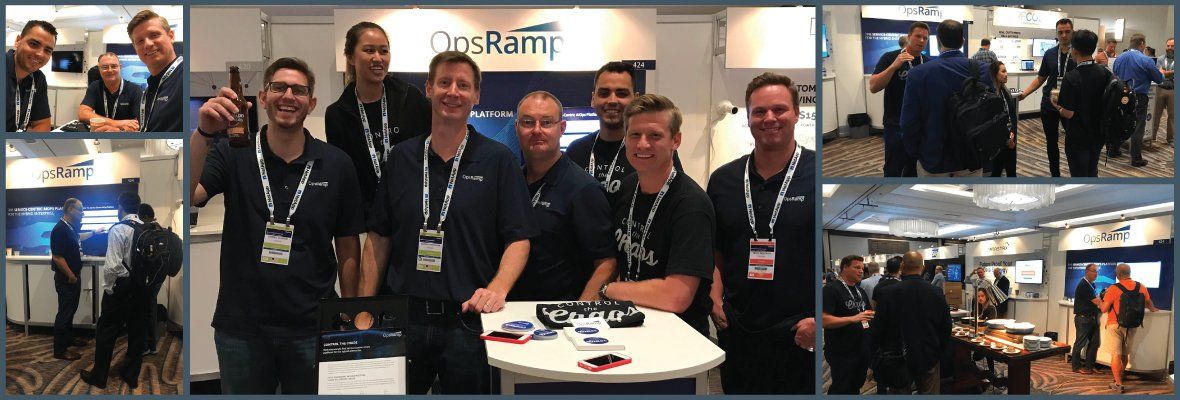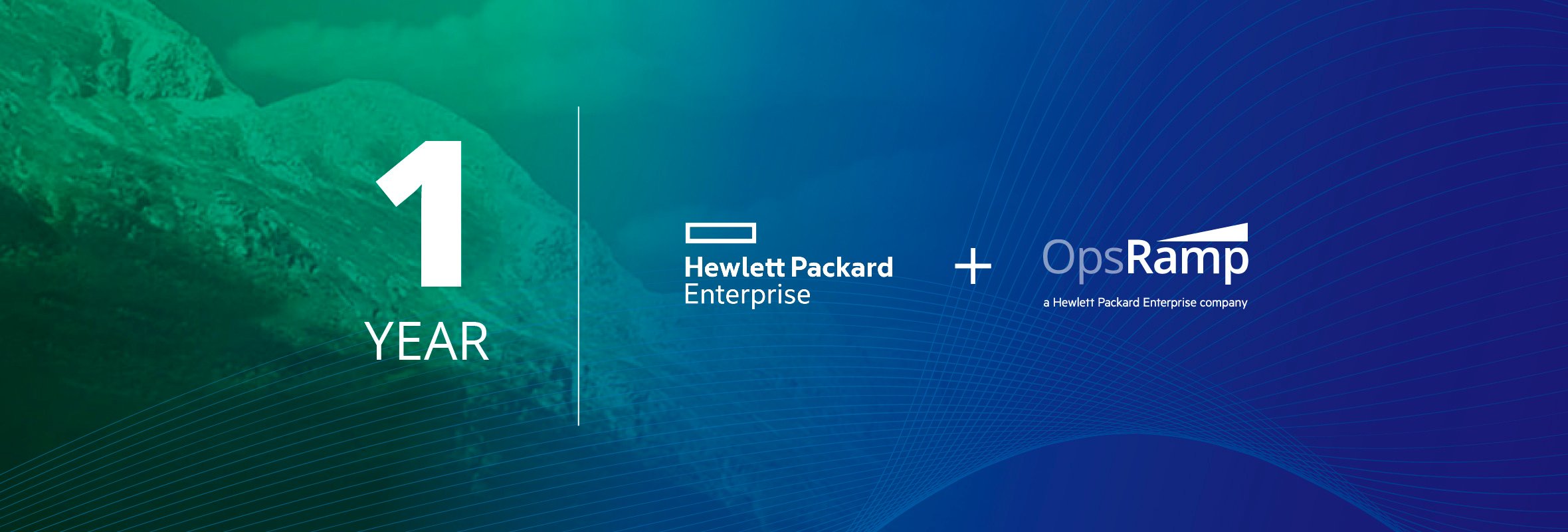The Gartner Catalyst Conference is consistently a great venue for learning, sharing, and connecting. OpsRamp was a silver sponsor at this year’s event and our team had a wonderful time meeting with industry thought leaders, demoing OpsRamp to senior IT executives, and having fun in the streets of San Diego.
In this post, I will summarize the most interesting themes that stood out from the conference keynotes and sessions, as well as other key takeaways from the week.
Connect, Automate, and Innovate
Technology infrastructure is driving business innovation and change. Agility and DevOps-style feedback loops for continuous delivery and faster innovation are increasingly important objectives for the modern enterprise. Machine learning discussions about collecting actionable insights have graduated to strategies for real-time automation at the edge. And infrastructure modernization is the lynchpin for harnessing digital business models and ultimately, competitive differentiation. The best part? The tools, technologies, and processes to make this a reality for Infrastructure & Operations (I&O) teams are available and in use today.
The role of I&O is evolving from technology thinking to services thinking, and some advanced orgs are moving to product thinking - producing products and platforms that the business consumes. #GartnerCAT pic.twitter.com/jQqsXDR6Kf
— Rich Bentley (@imrichb) August 13, 2019
Aligning Infrastructure for Organizational Vision and Purpose
Infrastructure and applications are everywhere. Embracing and imposing order on modern workloads with API-driven interconnectedness is critical to enabling intent-based automation. Programmatic, self-healing and contextual platforms are proven technologies for orchestrating faster and repeatable deployments for end-to-end DevOps. New frontiers of actionable intelligence (like serverless containers) will help I&O teams scale machine learning workloads for faster data processing. Intelligent infrastructure, applications, and augmented analytics are now everywhere and must be securely connected to drive business value. Technology professionals must rethink how they run IT and tap into emerging connected intelligence tools of the executable Internet.
‘Infrastructure is Everywhere’ says @ekhnaser #GartnerCAT pic.twitter.com/4QPvMEtWSa
— Kate Keough (@KateKeough1) August 12, 2019
It’s a DevOps World
As digital transformation sees greater adoption, I&O leaders are grappling with how to balance the developer’s needs for agility and flexibility while ensuring resilience, reliability, and compliance. Fast, flexible, and modular infrastructure is a key mandate for supporting rapid innovation and experimentation. However, as modern infrastructure grows ever more complex, ensuring the governance, visibility, and security of a hybrid enterprise ecosystem has become even more difficult. I&O teams need to rethink and rebuild infrastructure to become more automated, responsive, and self-servicing. Enterprise infrastructure is not a big monolithic component but modular services that integrate and play well together.
Automating all repeatable activities during a release cycle is critical for faster delivery. Treating infrastructure as code makes it easier to spin up and decommission workloads across the release pipeline. And, create an API gateway as the endpoint for managing access to APIs, ensuring seamless connectivity, and bringing centralized oversight of the enterprise API landscape.
Good advice from #GartnerCAT to treat your #API strategy as a product... select a #lowcode approach that helps make this a reality @Kinvey pic.twitter.com/Xm0FfxuNen
— Mark Troester (@mtroester) August 14, 2019
Legitimizing the Platform Ops Approach
“Everything looks green in the dashboard but is really red inside,'' said Gregg Siegfried, Gartner’s research director for cloud and IT operations. The ‘watermelon analogy’ explains why I&O pros need to embrace a platform operations approach for digital business. IT teams need to simplify operations by centralizing on a powerful platform that’s capable of real-time networked discovery and intelligent correlation for digital user experiences (not just apps and infrastructure). The need to collect performance and incident data is now superseded by the need to intelligently connect this data for self-healing automation.
#DevOps shift to take advantage of cloud-native #GartnerCAT @pivotal pic.twitter.com/TGngI1xqNp
— Pat Johnson (@PJ4DevOps) August 14, 2019
Embrace A Service-Focused Operations Culture
The role of I&O teams is changing to be service focused. Business users don’t care about the underlying technologies anymore but want different choices for what they need to do. I&O is now a broker of services that the organization wants to involve earlier in the design process. For this to happen, IT infrastructure professionals need to grow their skill sets in areas such as service integration, multi-cloud management, and automation operations. Automation requires scripting knowledge, so scripting skills (Powershell) and automation scripts (Jenkins) are even more critical. It’s time for digital operations teams to step into the shoes of the developer by learning code and software development skills.
Real world job description for platform engineer! #platformops #gartnerCat pic.twitter.com/gnjhPjMuyL
— ritam (@ritam) August 13, 2019
The Future is Now
Today’s inflection point is more exciting than ever before. The energy of the Gartner analysts, attendees, vendors, and external speakers confirmed this. IT practitioners everywhere remain excited, motivated, and optimistic for the future of the I&O industry. Gartner did a great job of presenting a framework for managing digital operations, including the technologies, processes and, most importantly (for the DevOps world we’re living in now), the skillsets and culture required to drive true business value from implementing today’s innovations.
It was encouraging to hear the stories of many organizations on years two and three of their digital transformations and cloud-first journies. I can’t wait for what is to come next.
Next Steps:
- Check out the OpsRamp ROI Calculator.
- Schedule a custom demo with a solution specialist.
- Follow OpsRamp on LinkedIn and Twitter.






